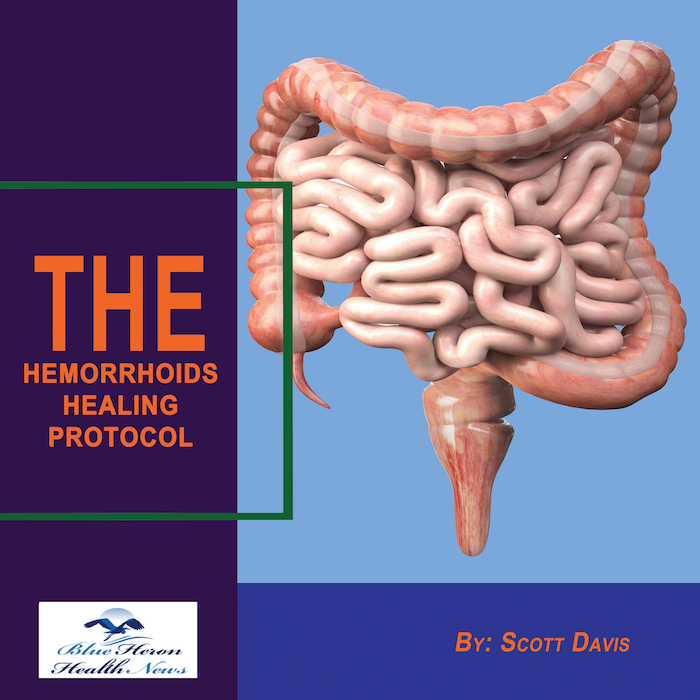
The Hemorrhoids Healing Protocol™ By Scott Davis Hemorrhoid healing protocol is a three-week online program that helps in treating and reducing hemorrhoids. It teaches gentle recipes and movements, natural and effective remedies that help in treating hemorrhoids.This program is not like the usual prescription medicines, it is a hell of a lot more than just those drugs. It focuses more on elevating the two main not so good habits that are connected to the Hemorrhoids. Overall the sole motive of this program is to remove the problem from its root instead of just treating the symptoms.
How can increased fiber intake help with hemorrhoids?
How Increased Fiber Intake Helps with Hemorrhoids
Increasing fiber intake is one of the most effective dietary strategies for preventing and managing hemorrhoids. Hemorrhoids are swollen veins in the lower rectum and anus that can cause pain, itching, and bleeding. A high-fiber diet can alleviate these symptoms and reduce the risk of developing hemorrhoids by promoting healthy bowel movements and improving overall digestive health. Here’s a detailed explanation of how increased fiber intake helps with hemorrhoids:
1. Promotes Regular Bowel Movements
Mechanism:
- Bulk Formation:
- Fiber adds bulk to the stool, which helps it move more efficiently through the digestive tract.
- Stimulates Peristalsis:
- The increased bulk stimulates peristalsis, the wave-like muscle contractions that move food through the intestines.
Impact on Hemorrhoids:
- Prevents Constipation:
- Regular bowel movements prevent constipation, which is a major risk factor for hemorrhoids.
- Reduces Straining:
- Easier and more frequent bowel movements reduce the need to strain during defecation, decreasing the pressure on the rectal veins.
2. Softens Stools
Mechanism:
- Water Absorption:
- Soluble fiber absorbs water and forms a gel-like substance that softens the stool, making it easier to pass.
Impact on Hemorrhoids:
- Easier Passage:
- Softer stools reduce the effort and strain required to pass bowel movements, minimizing the pressure on hemorrhoidal veins.
- Prevents Abrasions:
- Soft stools are less likely to cause abrasions or tears in the anal canal, which can exacerbate hemorrhoids.
3. Reduces Inflammation
Mechanism:
- Anti-Inflammatory Effects:
- Some high-fiber foods have anti-inflammatory properties that can help reduce inflammation in the digestive tract.
Impact on Hemorrhoids:
- Decreases Swelling:
- Reducing inflammation in the rectal area can decrease the swelling of hemorrhoidal veins.
- Promotes Healing:
- Anti-inflammatory effects can promote the healing of existing hemorrhoids and prevent new ones from forming.
4. Enhances Gut Health
Mechanism:
- Prebiotic Effects:
- Dietary fiber, particularly soluble fiber, acts as a prebiotic, feeding beneficial gut bacteria and promoting a healthy microbiome.
- Short-Chain Fatty Acids:
- The fermentation of fiber by gut bacteria produces short-chain fatty acids (SCFAs), which support colon health and regularity.
Impact on Hemorrhoids:
- Improved Digestion:
- A healthy gut microbiome enhances overall digestive function, reducing the likelihood of constipation and irregular bowel movements.
- Colon Health:
- SCFAs help maintain the integrity of the colon lining, potentially reducing the risk of hemorrhoid formation.
5. Prevents Complications
Mechanism:
- Consistency in Stool:
- Regular fiber intake ensures consistent stool texture and frequency.
Impact on Hemorrhoids:
- Avoids Acute Episodes:
- By maintaining regular, soft bowel movements, increased fiber intake helps avoid acute episodes of pain, bleeding, and prolapse associated with hemorrhoids.
- Long-Term Management:
- Consistent fiber intake provides long-term management of hemorrhoid symptoms and prevents their recurrence.
Sources of Dietary Fiber
Fruits:
- Examples:
- Apples, pears, berries, oranges, bananas.
- Benefits:
- High in soluble fiber, which helps soften stools and add bulk.
Vegetables:
- Examples:
- Broccoli, carrots, Brussels sprouts, spinach, sweet potatoes.
- Benefits:
- Rich in both soluble and insoluble fiber, promoting overall digestive health.
Whole Grains:
- Examples:
- Oats, brown rice, quinoa, whole wheat bread, barley.
- Benefits:
- Whole grains are a significant source of insoluble fiber, which adds bulk to stools and speeds up transit time through the digestive tract.
Legumes:
- Examples:
- Beans, lentils, chickpeas, peas.
- Benefits:
- High in fiber and protein, legumes help maintain regular bowel movements and support gut health.
Nuts and Seeds:
- Examples:
- Almonds, flaxseeds, chia seeds, walnuts.
- Benefits:
- Provide a good mix of fiber and healthy fats, promoting overall digestive health.
Practical Tips for Increasing Fiber Intake
Gradual Increase:
- Start Slowly:
- Gradually increase fiber intake to allow the digestive system to adjust and to minimize potential side effects such as gas and bloating.
- Hydration:
- Drink plenty of water to help fiber work effectively in softening the stool and promoting regular bowel movements.
Balanced Diet:
- Variety:
- Incorporate a variety of high-fiber foods from different sources to ensure a balanced diet and obtain different types of fiber.
- Meal Planning:
- Plan meals to include high-fiber foods, such as adding fruits to breakfast, vegetables to lunch and dinner, and legumes as part of the main meal or a side dish.
Reading Labels:
- Fiber Content:
- Check food labels for fiber content, aiming for products with higher fiber content, especially when choosing cereals, bread, and snacks.
Supplements:
- Fiber Supplements:
- Consider fiber supplements, such as psyllium husk, if dietary intake is insufficient. However, it’s best to get fiber from whole foods whenever possible.
Conclusion
Increasing fiber intake is a highly effective strategy for preventing and managing hemorrhoids. A high-fiber diet promotes regular bowel movements, softens stools, reduces inflammation, enhances gut health, and prevents complications associated with hemorrhoids. Incorporating a variety of high-fiber foods, such as fruits, vegetables, whole grains, legumes, nuts, and seeds, along with proper hydration, can significantly improve digestive health and reduce the risk of hemorrhoids. By understanding the importance of fiber and implementing practical dietary changes, individuals can manage hemorrhoid symptoms more effectively and improve their overall quality of life. Regular consultations with healthcare providers and nutritionists can provide personalized dietary advice and support for maintaining optimal digestive health.
The Hemorrhoids Healing Protocol™ By Scott Davis Hemorrhoid healing protocol is a three-week online program that helps in treating and reducing hemorrhoids. It teaches gentle recipes and movements, natural and effective remedies that help in treating hemorrhoids.This program is not like the usual prescription medicines, it is a hell of a lot more than just those drugs. It focuses more on elevating the two main not so good habits that are connected to the Hemorrhoids. Overall the sole motive of this program is to remove the problem from its root instead of just treating the symptoms.
